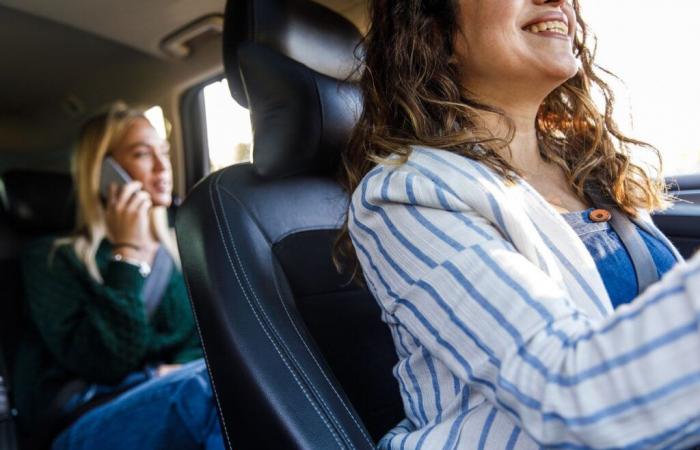Who has never felt a touch of apprehension when getting into a VTC late at night? While most journeys go smoothly, certain situations remind us that safety is a very real concern. Uber meets this expectation with the “Uber by Women” option, which allows users to choose a female driver for their ride. A way to reassure those who want to travel with complete peace of mind, but which comes with some limitations.
In fact, this option, accessible at no additional cost, could result in a prolonged waiting time. With only 1,500 partner drivers out of the 45,000 drivers registered in France – or barely 3% – passengers will sometimes have to wait 15 to 20 minutes, compared to 3 to 4 minutes for a classic order reveals “Le Parisien”
A profession still not very accessible to women
The launch of “Uber by Women” does not only respond to a safety issue: it is also part of a process of feminization of the profession. As Uber points out, women represent a tiny minority among drivers. The reasons? A work environment sometimes considered hostile, unattractive nighttime hours, and a feeling of insecurity that is often shared.
To encourage more women to get started, Uber is offering financial incentives. Drivers benefit from a reduction in the commission charged by the platform, which temporarily drops from 25% to 15% on trips carried out via this option. A measure which will remain in force until next February.
Read also >> Assaults in VTC: “Ultimately, the metro is perhaps a “safer” solution than Uber”
A late response to customer concerns
The deployment of this option comes the day after the International Day to Combat Violence Against Women. If Uber denies any link with recent news items, the platform has had to face several scandals linked to attacks in its vehicles. Laureline Serieys, general director of Uber France, insists in “Le Parisien”: “This is not a reaction to recent incidents, but the continuation of long-term work on security and the fight against sexist violence . »
Uber had already introduced other tools such as real-time trip tracking, PIN code to verify the driver, or random verification of the identity of drivers. However, these measures were not enough to completely alleviate users’ fears, especially for night-time journeys.
Drivers at the heart of the system
For Shirley Dauger, partner driver and former nurse, the “Uber by Women” option is an opportunity to better meet customer expectations. “For sure, I’m going to do more shopping,” she declared to the newspaper “Le Parisien”. She says many female passengers tell her of their relief when they discover a woman is behind the wheel.
Some tell him their tips for feeling safe: being dropped off a few meters from home, wearing headphones or sitting behind the driver to avoid stares. Anecdotes which remind us that, for many women, safety is a daily issue.
A step forward, but obvious limits
If “Uber by Women” seems to meet a real expectation, it also raises questions. Why is such an option necessary? Does it not reveal a structural problem of insecurity in transport, whether public or private? Furthermore, dependence on a small number of available drivers risks limiting the impact of this functionality in the short term.
By positioning itself on feminization and safety, Uber is paving the way for essential discussions. This system will not be able to respond to all the challenges of a profession still marked by gender inequalities and sometimes precarious working conditions.
Is this a step forward for women or just a marketing tool?






